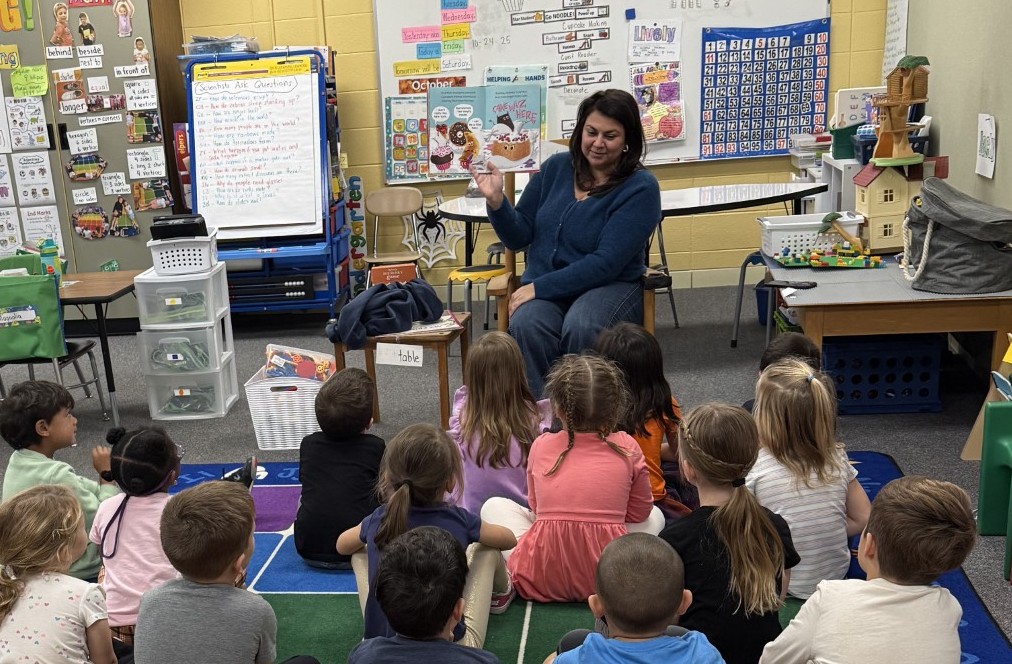Best Free Veterans Day Lessons & Activities
Plan your Veterans Day classroom activities and lessons with quizzes, videos, primary sources, and more

Updated November 5, 2024
The best Veterans Day lessons and activities can provide the perfect way to engage your students in a variety of topics, ranging from STEM to history and English to social studies and more.
Veterans Day takes place on November 11 every year. That date marks the conclusion of World War I, a terrible conflict that came to a close on the eleventh hour of the eleventh day of the eleventh month of 1918. Originally called Armistice Day, the holiday received its current name in 1954.
Educators can guide their students through the history of the holiday – the day honors veterans both living and dead – and learn about American history and culture in the process.
Just remember to make sure the discussion of veterans and warfare is age-appropriate. Facilitators should also be mindful that many of their students will have family members who serve or have served in the armed forces, and that discussions of combat should be undertaken with great sensitivity.
U.S. Veterans Affairs Teachers Resource Guide
Every year, U.S. Veterans Affairs puts out a robust teachers guide for Veterans Day-related classroom activities. This year is no different, and this resource guide features a wealth of information on the history of Veterans Day, suggestions for classroom and school-wide activities to mark the day, as well as lessons and information on how Veterans Day differs from Memorial Day and proper flag-folding etiquette.
Explore the Meaning of Sacrifice With a PBS Lesson Plan
Tools and ideas to transform education. Sign up below.
This middle and high school Veterans Day lesson plan spans approximately 50 minutes of class time. It starts with a discussion and pre-quiz about the topic and includes a short video from the History Channel and an interactive timeline on U.S. wars. The heart of the lesson plan, however, is a group exploration of the challenges veterans face today, including the risks and benefits of being a soldier.
Veterans Day for Kids: How To Make It Memorable
The Wounded Warrior project offers a collection of creative Veterans Day activities and hands-on learning experiences for kids, including values activities and community connections.
NEA: Veterans Day in The Classroom
Educators teaching Veterans Day will find a wealth of lesson plans, activities, games, and resources here that are broken down by grade level. In one activity students in grades K-12 view and then interpret Winslow Homer’s 1865 painting The Veteran in a New Field.
Discovery Education -- U.S. – Why We Serve.
This no-cost virtual field trip for upper elementary and middle school students helps teachers and students around the world learn about the importance of service through the stories of two U.S. Congressman who served in the US military.
Veterans’ Stories: Struggles for Participation
The Library of Congress maintains this collection of video interviews, documents, and writings that tell the firsthand stories of men and women who served despite being discriminated against based on their race, heritage, or gender. Exploring these resources with your students is a good way to examine the diversity of veteran experience and the ongoing fight for equality within the military. See this teacher’s guide to the collection for more details.
Library of Congress: Veterans History Project
The VHP, which is a special project of the American Folklife Center at the Library of Congress, is the largest oral history project in U.S. history. Since it was founded in 2000, it has collected over 65,000 items from thousands of veterans. Approximately 150 additional items are added every week.
Teacher Planet: Veterans Day Lessons
Teacher Planet offers educators a variety of resources for teaching Veterans Day ranging from lesson plans to worksheets and activities. For example, there is a lesson plan examining the Vietnam Veterans Memorial in Washington D.C. and others looking at significant battles in U.S. history.
The Teacher’s Corner: Veterans Day Resources
Teachers can choose from various lessons and activities that are designed for teaching Veterans Day, including a printable online Veterans Day scavenger hunt, and lessons such as honoring our veterans through poetry.
Read About Veterans in Historic Newspapers
Your students can read about the end of World War I, which inspired Veterans Day, as well as get an immediate sense of what life and public opinion was like during past wars by exploring various digital newspaper archives. See Tech & Learning’s recent newspaper archive guide for more information.
Military.com: Why Veterans Day Doesn't Use An Apostrophe
Some students may be tempted to write, “Veteran’s Day” or “Veterans’ Day,” both are incorrect. According to the Department of Veterans Affairs, the day doesn't belong to veterans, but instead honors them.
Listen to An Interview About Veterans
To better understand the difficulties that veterans today face, your students can listen to an NPR interview with author Tim O’Brien, conducted 20 years after the publication of The Things They Carried, O’Brien’s celebrated book about soldiers in the Vietnam War. You can then discuss the interview and/or read an excerpt from O’Brien’s book.
Erik Ofgang is a Tech & Learning contributor. A journalist, author and educator, his work has appeared in The New York Times, the Washington Post, the Smithsonian, The Atlantic, and Associated Press. He currently teaches at Western Connecticut State University’s MFA program. While a staff writer at Connecticut Magazine he won a Society of Professional Journalism Award for his education reporting. He is interested in how humans learn and how technology can make that more effective.

